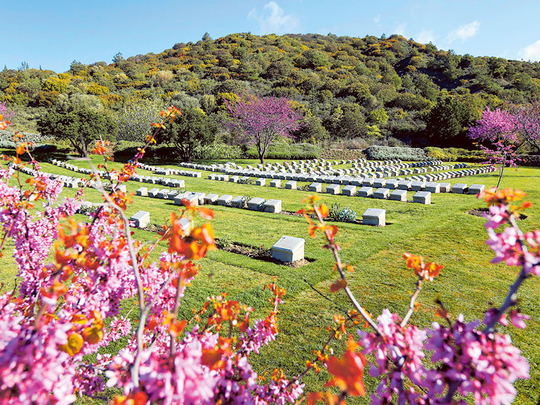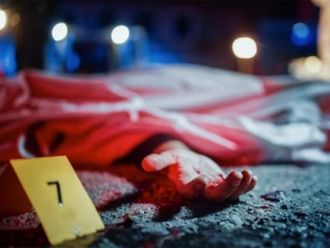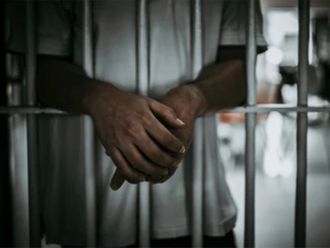
Sydney: It’s been a century since William Boase was killed in the First World War’s disastrous Gallipoli campaign, but the Australian soldier’s family has never lost hope of giving him a proper burial.
And now that two Australian history buffs believe they have pinpointed the site of mass graves containing 143 Australian soldiers at Gallipoli, there are calls for authorities to investigate.
“There is a lot of pressure from people who think, ‘They’re at rest, why would you do anything?’” Boase’s descendant Allan Grant said from his home in Melbourne.
“My answer to that has always been, the family were never at peace.”
The ill-fated Gallipoli campaign begun on April 25, 1915 ended in defeat for Allied forces, with more than 11,000 Australian and New Zealand Army Corps (Anzac) soldiers losing their lives on the battleground, which is now part of Turkey.
Many were hastily buried where they died, others were interred by the Commonwealth War Graves Commission in peace time.
After years of research, and guided by the diaries of two soldiers who buried dozens of men, John Basarin from the non-profit group Friends of Gallipoli and retired Melbourne school teacher Lambis Englezos believe they know where at least 143 soldiers lie.
“I think we have a moral obligation to recover our war dead,” says Englezos, whose research previously helped uncover the graves of more than 200 soldiers who died on another WWI battleground, Fromelles in France, in 2008.
“You can ask any of the families who’ve had their soldier identified at Fromelles,” he said.
“It’s very important that there is closure. I believe that we have that moral obligation - they can’t be left in anonymous ground. If we can find our war dead we should do it. They cannot be a logistical or a financial inconvenience.”
Englezos and Basarin say the diaries indicate that the Australians used the cover of night after the second battle of Krithia, where Australians were sent to reinforce British positions in May 1915, to go out and recover the bodies and bury them in two mass graves.
They cite Captain Percy Lay, who wrote: “And that night, we tried to bury some of our dead. A party of us put 57 in one grave,” and Private Herbert Lloyd, whose diary records that “a burial party went out and buried 86 in one grave”.
“The terrain was very flat and where there was a dip in the ground, that’s where they probably buried them,” Englezos said, saying this and other physical clues have helped narrow down the possible grave sites.
Turkish-born Basarin, who first visited Gallipoli as a 10-year-old child, said the Australian government was informed about the possible grave sites several years ago, but was not inclined to test their contention with a ground search.
For Grant, giving Lance Corporal Boase, killed in action at Krithia, the burial he deserves would honour a promise to his grandmother to track down her long-lost brother.
“My grandmother was seven or eight when he went away and he was just 19. And so he was her hero,” he said.
“From being a little girl to right through to when she was an elderly woman, the biggest issue for her was that they didn’t know what had happened to him or where he was.”
Grant, who has visited Gallipoli twice, tracked down some details about Krithia, working out that the men who were killed before they got past the British trench into no man’s land had to have been gathered and put somewhere.
“And there was just no evidence that there was a marked grave so it was something that always intrigued me,” he said, adding that he hoped there would be some kind of investigation.
“The government will say it’s too hard, which they thought about Fromelles as well. The issue is, it’s only the size of a tennis court, the spot - it wouldn’t take too much to do a little bit of a dig to see whether there might be anything in there.”
Grant said the Boase family were “torn asunder by what happened to them in World War I, the loss of him”, with the soldier’s father trying to enlist in his 50s and ending up building air raid shelters in London and his older brother signing up and coming home battle-scarred.
“This family, this Boase family that we talk about, went through some extraordinary things during World War I and they are just a microcosm of what happened to so many families,” he said.
“But they weren’t going to forget it. They were never going to forget it.”












